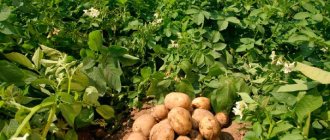The departments of stores where fruits and vegetables are displayed are often among the most important for small and medium-sized retail outlets, since these products are classified as essential products. Proper display of vegetables and fruits is a guaranteed influx of new ones and an effective tool for retaining regular customers.
Marketers analyze ways to stimulate sales, consumer preferences and options for increasing sales revenue related to the demonstration of the product, its location on the sales floor and placement at the exhibition. , which is one of the most experienced suppliers of freezing equipment, including commercial ones, takes into account the recommendations of specialists when selecting a range of equipment. We help our clients select equipment models that, in addition to ensuring internal operation and ease of use, will most fully represent the display of vegetables and fruits and other store goods.
Basic principles of department formation
We will not dwell on general rules. Let’s better remember how goods in this category were sold before the advent of specialized stores. Buyers provided their needs at regular bazaars, which is still quite popular today. There is always a beautiful display of vegetables and fruits that attracts attention.
What are the principles of trading at the bazaar? The product is in immediate access - you can pick it up, smell it, even try it. All products are placed in bulk, which creates the impression of abundance. The counter is always colorful and bright, which inevitably “catches” the eye and stimulates purchase. All products give the impression of freshness and ripeness.
All this can be realized in a modern store. Moreover, with the help of refrigeration equipment, which is supplied at a favorable price, the correct display of vegetables and fruits is ensured and their shelf life is increased. The technology allows you to effectively use even small areas of the sales floor, since refrigerated display cases for this type of goods have a vertical design with an increased display area.
Where can I get money for a fruit and vegetable store?
Selling vegetables requires certain funds to start. You can borrow money from a bank, borrow from friends, find a partner and open a grocery store together. Another option is that part of the amount can be received from the state for business development. The last option requires certain conditions to be met. You must:
- To be registered with the employment service means to be unemployed.
- Provide proof of income from your previous place of employment.
- Provide the commission with a business plan.
Rules for displaying fruits and vegetables
It is necessary to divide the department into zones in which different types of goods are placed. Thus, the entire assortment of root vegetables will be located in one zone, greens in another, and, for example, apples and citrus fruits in a third. This is convenient for both customers and staff whose task is to replenish the exhibition.
The combination of a refrigerated slide and a “camber” is optimal when proper storage conditions are created for perishable products. For supermarkets, it is best to locate the department at the beginning of the sales floor. At the same time, for the most profitable products, the “golden shelf” rule applies - they should be placed approximately at eye level.
The display of vegetables and fruits should be clearly visible even at a quick glance. The most popular category (cabbage, potatoes, carrots, beets and onions - the so-called “borscht set”) should be nearby so as not to complicate the buyer’s search for them. It is very important to properly design the department and select the equipment that is used for the exhibition.
To attract the attention of a potential buyer to a product display with vegetables and fruits, it is recommended to follow several principles of its design:
— the product is placed in such a way that it is clearly visible as customers move and is divided into clear blocks;
— the entire assortment is divided according to its type, that is, a vegetable zone, a fruit zone are visually formed, and the location of all types of greens and root crops is determined;
— perishable products must be placed in a refrigerated area;
— goods that should be sold in the near future are located at eye level of buyers;
— to form a loyal attitude among customers, the display must be beautifully designed, the equipment and goods must be kept clean.
Many products are currently being produced for decorating and zoning display space: wicker and plastic baskets, dummies of vegetables and fruits, artificial greenery for decorating walls and commercial equipment.
If the store is focused on the high or middle price segment, it is recommended to use a practical and mobile shelf system, which allows for the most efficient use of retail space and has variable placement in the hall. If necessary, the shelf system can be supplemented with various modules or rearranged in accordance with the needs that arise when placing different types of goods. Therefore, the use of shelf systems allows you to flexibly change the product range and effectively adapt to customer requests.
An effective way to increase sales is thoughtful placement of price tags. It is necessary to take into account that price tags must be uniformly designed, and at the same time be large enough and bright, noticeable on different types of vegetables and fruits.
When conducting sales in the fruit and vegetable department, you can use information systems. Thanks to their isolated placement, the information on them is well perceived by customers and helps them navigate the store’s assortment. Most often, information systems with hanging mounts and A4 frames for placing information are used. The average length of such an information system is 2 meters; it is appropriate in self-service shopping areas to indicate prices above display windows. Information from the overhead information system is duplicated using a compact holder with a price tag on the edge of the tray or on the back line shelves.
What does a beautiful display of vegetables and fruits give?
Firstly, it is a guaranteed attraction of attention, which means an increase in sales. Secondly, this is the colorful design of the sales area, including artificial greenery and dummies, which, unlike the products themselves, do not deteriorate. Thirdly, the use of additional equipment (dividers, baskets, trays, etc.) is the convenience of customer service.
Equally important is the correct use of information design, including the presence of price tags and information systems that tell about promotions and discounts. A peculiarity of the domestic market is the love of consumers for large fruits. Their use allows you to create a beautiful display of vegetables and fruits, and play on the cost, increasing the store’s profit.
The principle of contrast, when placement is made taking into account the color characteristics of various products. On the one hand, each of them becomes more noticeable against the background of the others, and on the other, the overall attractiveness of the department and store increases.
Market analysis
Vegetable market
The total volume of vegetables and fruits consumed directly characterizes the well-being and health of the nation of any country. The FDFgroup company conducted a study among 300 Muscovites. The results show that residents of the capital regularly consume fresh vegetables and add them to their grocery basket. About 90% of respondents buy vegetables at least once a month.
Rice. 1. Frequency of purchasing fresh vegetables.
The demand for certain products is formed on the basis of local traditional dishes and food preferences. In Russia, potatoes, cucumbers, onions, tomatoes, carrots, cabbage, greens, and so on are especially popular among the respondents. Over the past three months, the choice of Moscow residents among fresh vegetables has been distributed as follows.
Rice. 2. Popularity of types of fresh vegetables in the market.
The main feature of the vegetable market is its seasonality. About 78% of the species are grown exclusively in open ground, and therefore these vegetables are available to buyers only for six months. Below is a table of the seasonality of vegetables and the period of their desired consumption throughout the year.
What experts do not recommend doing
You should not thoughtlessly place “hanging” or damaged goods on gold shelves. This may turn off the buyer. It is imperative to ensure that spoiled fruits are immediately removed from display and that all goods are bright and fresh.
Install cheap “used” equipment. It is imperative to select and install refrigeration equipment correctly. You can purchase reliable equipment from a huge assortment, as well as additionally equip it if necessary, at , the benefits of which have already been appreciated by thousands of customers.
Types of vegetables and description
The main feature of the classification of vegetables is what part of the plant they are. The huge variety of vegetables is divided into several main groups.
Tubers
- plants in which modified shoots (tubers) containing nutrients are formed on underground stems or roots. This type includes sweet potato, Jerusalem artichoke and the most common tuber crop - potato. This vegetable is grown in all agricultural regions of Russia.
Root vegetables -
This is a type of vegetable crop whose edible part is the root. This group includes carrots, beets, turnips, radishes, radishes, etc. Spicy root vegetables include parsley, dill, parsnips, celery, etc. These vegetables are suitable for long-term storage in winter and spring, without losing their beneficial properties and vitamins.
Brassicas.
This group is defined by several types of cabbage, similar in chemical composition: cabbage (white cabbage, Brussels sprouts, Beijing cabbage), cauliflower (broccoli, cauliflower) and stem cabbage (kohlrabi).
Salad.
These vegetables are cold-resistant and early ripening. They go on sale all year round and are consumed fresh and dry. This group includes lettuce, endive and watercress. They differ in taste and can be fresh, sour or bitter.
Spicy -
aromatic plants with a specific taste, which can be any part of the plant. Spices are used only as an additive to the main dish to give it new qualities. In turn, spicy vegetables are divided into two types: classic (those that are generally recognized by all cultures of the world) and local (used in certain areas depending on the climate and culinary preferences). Spicy vegetables include basil, dill, ginger, horseradish and so on.
Bulbous.
This group includes all types of onions (leeks, slime, shallots, batun, etc.) and garlic. These vegetables contain essential oils in large quantities, which gives the plants a specific aroma and pungent taste.
Tomato.
A group that combines tomatoes, sweet and hot peppers and eggplants. These vegetables are widely used both in home cooking and in the food industry.
Pumpkin or melon.
This group of vegetables includes cucumbers, zucchini, pumpkin, etc. Pumpkin vegetables are characterized by low calorie content, fresh aroma, pleasant taste and beneficial vitamin composition.
Legumes.
Cultivated plants that can be eaten fresh, canned or dried. This includes peas, mung beans, beans, soybeans, lentils, chickpeas, etc. These vegetables are very rich in plant protein, making them nutritious and healthy. They are very popular among vegetarians, as they can replace animal protein obtained from meat.
Cereals or cereals.
This group is represented by a single plant - sweet corn or maize. It has a high content of essential amino acids, which makes corn a valuable food product.
Dessert.
Vegetables received this name for their use as dessert, but rhubarb deserves this “title” most of all. Jam, compote, candied fruits or wine are made from it. Other types, asparagus and artichoke, are used as ingredients for main courses. They are also pickled and made into side dishes and salads.
Thanks to developed international logistics, there is a huge variety of vegetables on the market. It is a natural source of essential substances, vitamins, vegetable proteins and fiber. The benefits of vegetables cannot be overestimated and therefore the demand for this crop never subsides. On the contrary, with the particular popularity of a healthy lifestyle and vegetarianism, vegetables occupy an increasingly important place in the diet of modern people.
Prospects for the development of the vegetable business
The first thing a new entrepreneur in any field faces is competition. Many people can't stand this. There are plenty of competitors in the sale of fruits and vegetables. There are supermarkets, small shops, and vegetable market stalls. But this is not a reason to stop. Supermarkets do not always sell fresh and high-quality vegetables; the market is overflowing with products without certificates. If you seriously decide to get into this business, then a competent business plan will lead you to success.
We need to figure out why people visit supermarkets. Many are not satisfied with the quality of the product, many with the assortment. It is worth noting that what drives people to the supermarket is the lack of an alternative. Many microdistricts of the city are simply deprived of vegetable shops and shops, so customers have no choice but to go to the nearest supermarket and be content with what is offered there.
Experienced entrepreneurs can confidently say that selling fruits and vegetables is quite a profitable business. Even the most ordinary vegetable shop can bring in good income. The main thing is to choose its location wisely and select an assortment of goods that corresponds to demand.
There are several options for trading fruits and vegetables:
- Trading stall specializing in the sale of fruits and vegetables;
- Vegetable shop;
- Wholesale of vegetables and fruits, delivery to customers.
The type of activity may depend on several factors: the funds available to the beginning businessman, competition in the area, demand for the product offered.
How to choose a type of activity:
- Wholesale base.
Its opening is possible only if you have one or more cargo vehicles, as well as having the necessary connections and an established customer base; - Shop or stall.
The best option for a beginner. You can open a store if the entrepreneur has his own premises for the store or has the opportunity to rent it; - Counter.
This is an option for those who do not have large funds. In this case, it is better to start with several types of fruits or vegetables, and as the business develops and income increases, the range can be expanded.
But don't forget about the rules. Any trade must be permitted by certain authorities, the product must have all the necessary licenses, and the entrepreneur must always have the entire package of documents. Otherwise, such an enterprise will be closed and the owner will be fined.
Possible risks
Risks include low traffic of the place where the vegetable shop is located. Before you start coordinating with local authorities, find out how many people go to the right place. The convenience of this niche lies in its compactness and mobility. If there are few buyers, the store can be moved to another location without much effort.
And dey to open a vegetable stall
in the autumn-winter period this is a very good start for your business. By selling only vegetables, and not counting fruits, you can earn good money, about 70-150 thousand rubles per month. After all, it’s no secret that many people like to store vegetables for future use and willingly buy bags of potatoes, onions, carrots, and so on. Cabbage also goes very well, which is fermented and consumed almost all winter.
Once you have found a suitable location, you will need to take care of the paperwork, i.e. register as an Individual Entrepreneur and obtain the necessary permits from departments such as the department of commerce of your city, the architecture department of your city hall, the sanitary and epidemiological station, the fire service and others. You can learn more about the necessary documents for opening your vegetable tent
Therefore, first, let's start looking for a place for your future trade tent. A good place for a trade tent would be busy street intersections, places at the entrance to markets or the metro, and it is also possible to place a tent in the courtyards of a microdistrict of your city, where there are quite a lot of high-rise buildings.
Yes, in parallel with finding a place, you should also look for a place for a warehouse where you will store goods at night or on weekends, if you have any. The warehouse must be dry, clean and meet sanitary standards. In addition to the warehouse, you will need to purchase the sales tent itself and a table for displaying goods. Also purchase electronic scales with the ability to weigh at least up to 20 kg and a cash register, if necessary.
If you yourself are going to sell in a vegetable tent, then this is a good and profitable option, and if you are going to hire a seller, then when selecting a seller for a vegetable tent, you need to adhere to certain requirements, which you can familiarize yourself with. You should also pay increased attention to the selection of sellers. The more polite the sellers are, the more often the buyer will return to you. The appearance of the seller plays a big role - it must inspire confidence.
Now about the assortment, in addition to traditional types of vegetables, i.e. potatoes, onions, carrots, cabbage and red beets, you can add other vegetables. To do this, look at what sells well at other retail outlets - then take it, you can also add apples and pears. In addition, you can supplement the range of products with canned vegetables and fruits, pickles, mushrooms, drinks, dried fruits and nuts.
It’s not difficult to find a supplier now, but you need to approach his choice very carefully. After all, the success of your business depends on what exactly will be brought to you and in what time frame. Purchase goods from suppliers in small quantities and immediately discuss the possibility of exchanging or returning products that for some reason were not sold or have become unusable.
The markup on vegetables can range from 30 to 120%. From the beginning, i.e. for promotion, try to set prices a little lower than your competitors. When trade picks up, you can expand the range of citrus fruits.
Now let's look at the main expenses:
- Registration of documents 5-15 thousand rubles.
- Rent of premises for a warehouse 20-50 thousand rubles.
- The cost of a tent, trading table, scales and other equipment is 15-40 thousand rubles.
- The seller's salary is 15-20 thousand rubles.
Total, approximately you will need about 55-150 thousand rubles.
So, go ahead, try and you will succeed!!!
If you have questions or want to add anything to this article, please write in the comments below.
Important.
In order not to make a lot of mistakes and not spend extra money, I highly recommend reading the e-book: “The Story of the Successful Opening of Your Own Outlet in the Form of a Vegetable Tent”
The department selling vegetables and fruits is key for most small format stores, as it belongs to the essential categories. Thanks to the proper display of goods in the Vegetables and Fruits department, it is possible to increase the influx of customers into the store and stimulate the turnover of vegetables and fruits. With the help of a well-thought-out planogram for the vegetable department, you can attract customers to the grocery store.
.
To understand the features of proper display of vegetables and fruits
, it is important to understand how these goods were sold before the advent of the modern trading format. That's right! They were sold at the markets!
Now this original format of trade is popular in many countries. Remember how vegetables and fruits are laid out at the market and everything will become clear!
Goods supply
When you first start a vegetable business, you will have to work with a large number of suppliers. Before paying for the delivery of a consignment of goods, find out where the products were brought from, in what conditions they grew, and, if possible, personally take a sample. This way, over time, you will choose the most conscientious and responsible suppliers.
To open a vegetable store and purchase goods, you will need to spend at least 10 thousand rubles, and then you need to purchase products worth 2-2.5 thousand dollars per month. Of course, special attention must be paid to the quality of the goods, because only vigilance will eliminate losses and preserve your reputation.
Take note right away that at least 15% of vegetables and fruits will spoil. But there is a way out here too; slightly spoiled products can be sold at a 50-70% discount. The trade margin on vegetables and fruits can range from 30% to 250%.










